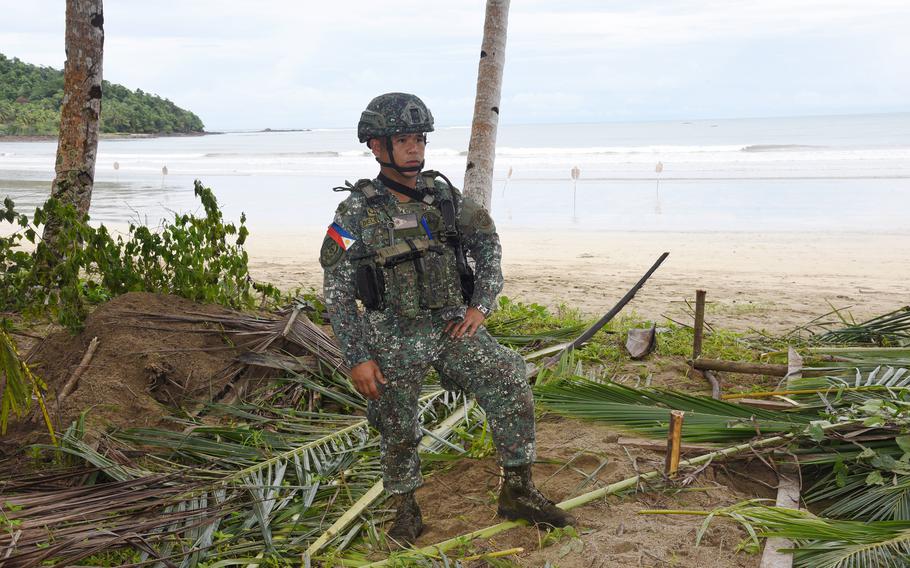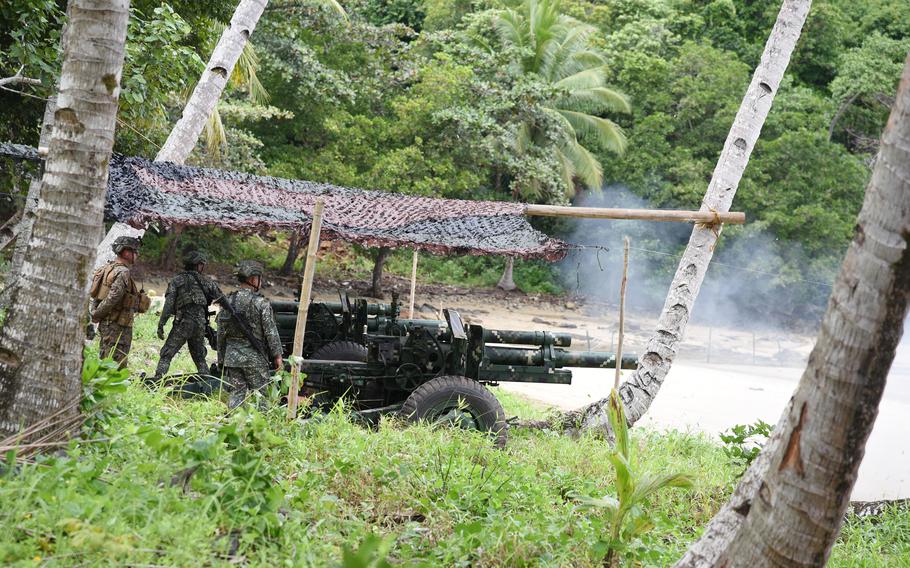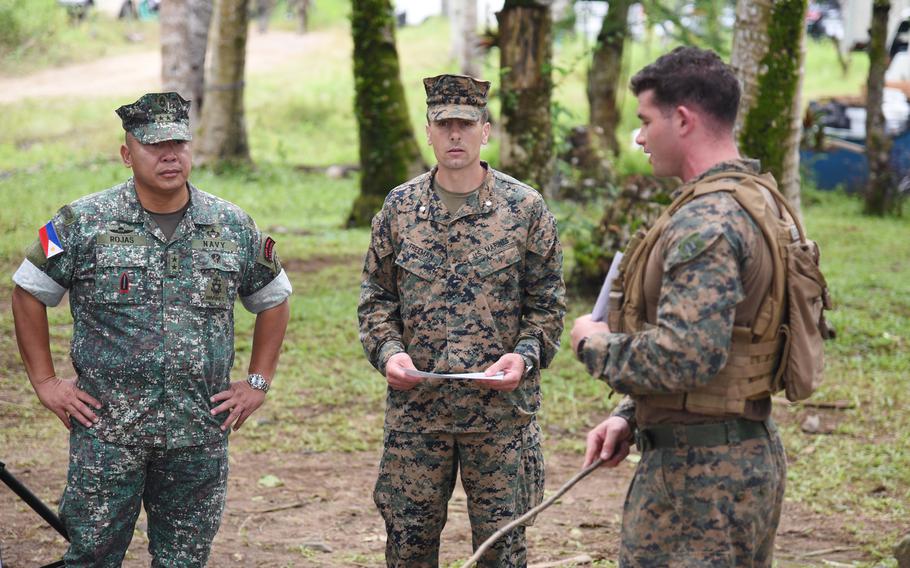
A Philippine marine stands on Palawan's western coast, facing the South China Sea, during live-fire training with U.S. Marines in the Philippines, Oct. 22, 2024. (Seth Robson/Stars and Stripes)
PUERTO PRINCESA, Philippines — U.S. Marines are strengthening ties with their Philippine counterparts on an island that borders the South China Sea as the U.S. ally faces an ever-assertive Beijing.
The strategic importance of Palawan, a narrow, 280-mile-long island where Marines have been training this month with the Philippine 3rd Marine Brigade, is “obvious,” said 15th Marine Expeditionary Unit commander Col. Sean Dynan.
“It controls the straights into the Sulu Sea and into the South China Sea and West Philippine Sea,” he told Stars and Stripes while standing on Palawan’s western shore Tuesday.
American and Filipino marines spent that morning on live-fire coastal defense training there as part of the annual Kamandag exercise.
This year’s training involves more than 1,000 Marines and sailors of Marine Rotational Force-Southeast Asia and the 15th MEU from Camp Pendleton, Calif. Kamandag began Oct. 15 and concludes Friday.
The live-fire training on Palawan took place in Aborlan, a municipality facing the South China Sea that’s about 125 miles east of Sabina Shoal, where Philippine and Chinese coast guard vessels collided Aug. 31.
Philippine authorities allege a Chinese vessel rammed a Philippine ship three times; China claims the Philippine ship instigated the clash. It was the latest in a series of incidents involving the two nations’ vessels in or near the Philippines’ exclusive economic zone.
“It’s key terrain to defend from and key terrain to operate from,” Dynan said of Palawan, noting that the island hosts two sites approved for use by American forces.

U.S. and Philippine marines carry out live-fire defense drills facing the South China Sea in Palawan, Philippines, Oct. 22, 2024. (Seth Robson/Stars and Stripes)
Antonio Bautista Air Base in Puerto Princesa, the provincial capital, and Naval Station Narciso Del Rosario, on Balabac Island in the southern part of the province, are two of nine sites identified for U.S. use under the Enhanced Defense Cooperation Agreement.
U.S. Marine units have been on Palawan often in recent years, while the 3rd Marine Brigade, based on the island, has grown in capabilities, Dynan said.
“The majority of countries around this area recognize that amphibious capability is a requirement in this environment,” he said. “The U.S. has the longest-standing amphibious force, so this is our time to shine and help.”
Philippine forces on Palawan have asked for help building skills to coordinate fires, counter-drone training, nonlethal training and establishing ranges, Dynan said.
Those forces are also focused on Palawan, said Vice Adm. Alfonso Torres, head of the Western Command at Puerto Princesa, which oversees operations on the island and in the disputed bits of territory in South China Sea.

U.S. and Filipino marine commanders attend a briefing ahead of defense drills facing the South China Sea in Palawan, Philippines, Oct. 22, 2024. (Seth Robson/Stars and Stripes)
“We are not just monitoring (the disputed waters),” he said at the coastal defense training event. “We are operating also.”
Palawan’s strategic importance is growing as the Philippine armed forces shift focus from internal to external security, Torres said.
Western Command is at the forefront of that shift, he added.
“We are slowly shifting our forces from the south to the west because of the declining issues with insurgency,” he said.
The Philippine forces on Palawan will receive new equipment, not only to conduct operations, but also for intelligence, surveillance and reconnaissance, Torres said.
The Philippines plans to spend $35 billion over a decade modernizing its military, with most of that going to the navy to strengthen the country’s capabilities in western waters, the Philippine Star reported May 2, quoting Philippine navy spokesman Commodore Roy Vincent Trinidad.
“This is the west side of the Philippines,” Torres said of Palawan. “We are protecting the peace and security of the West Philippine Sea.”